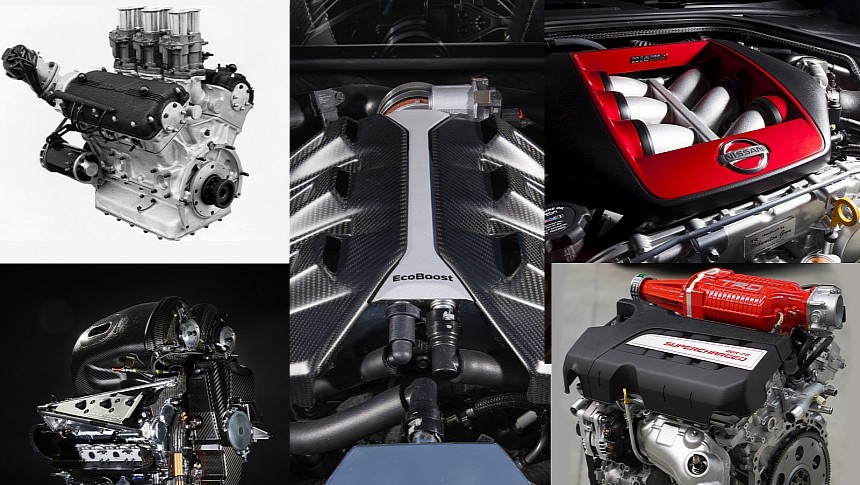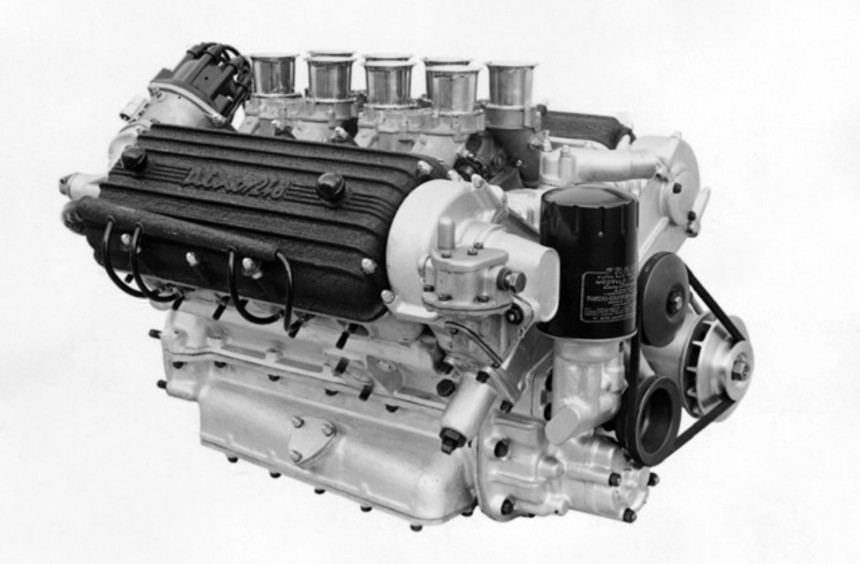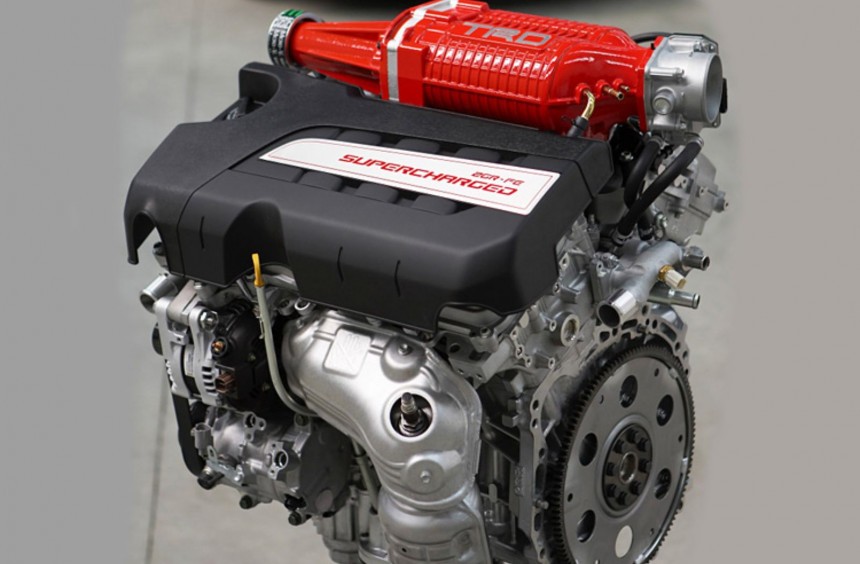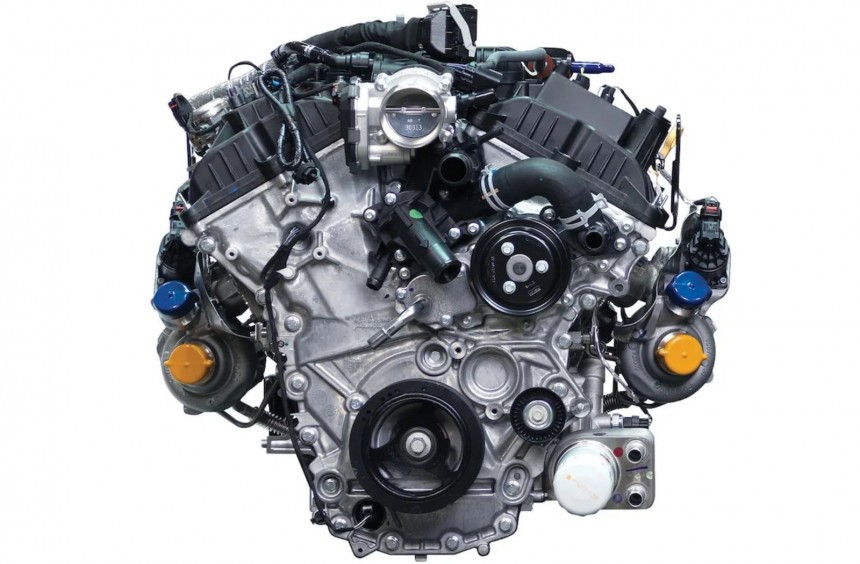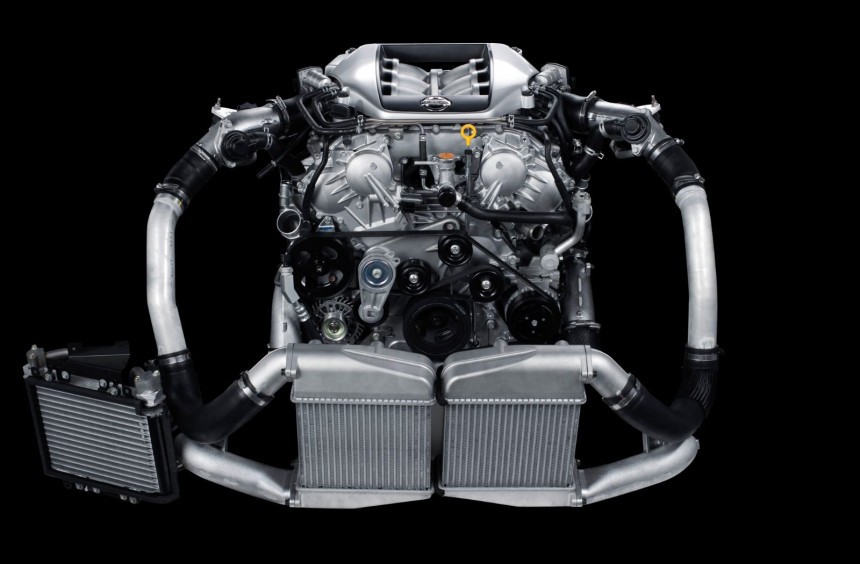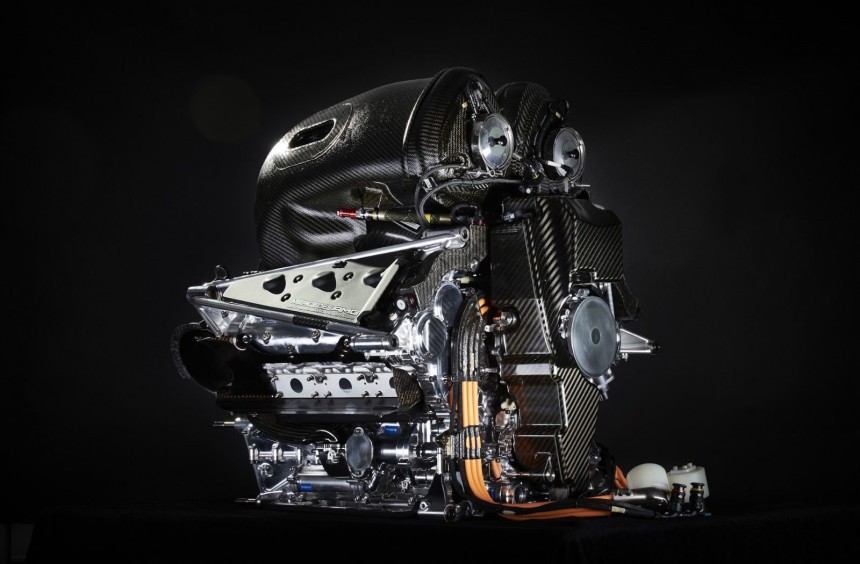Some say that a V6 is at least two-cylinders away from being a great engine, but these high-performance units prove that choosing this configuration can result in engineering masterpieces.
The story of the V6 engine starts during the second half of the 1910s when the Marmon Motor Car Company (US), Deutz (Germany), and Delahaye (France) independently developed the first functional prototypes that employed this configuration.
However, neither company could solve the imbalance caused by the odd number of cylinders in each bank, so none of the prototypes made it into large-scale production.
The imbalance issue plagued engineers for decades, but in the late 1940s, a team of Lancia forward-thinkers led by Francesco De Virgilio made a breakthrough, which led to the first mass-produced V6.
From that point on, the configuration was employed by other carmakers, and by the mid-1990s, the V6 engine started replacing the V8 and the straight-six under the hood of production cars thanks to its compact packaging and power potential.
The characteristics mentioned above also made the V6 a viable high-performance candidate, with beefed-up versions powering race cars in various motorsport disciplines.
Consequently, the configuration was chosen by engineers for some of the most exciting sports cars and supercars ever built.
Lancia's breakthrough V6 inspired many companies to develop their own units, and one of them was none other than fellow Italian powerhouse Ferrari.
The project was kickstarted by Enzo Ferrari's son Alfredo "Dino" in 1955. The talented young engineer planned to develop a race engine for the Formula 2 series, but unfortunately, he died about a year later.
Nevertheless, a dedicated team led by the legendary Vittorio Jano, who just came over from Alfa Romeo, continued his work.
In the late 1950s and early 1960s, the engine, which was christened Dino, was used in several race and road cars.
With a displacement of either 2.0 to 2.6 liters, Ferrari's first production V6 initially powered road-legal models like the company's Dino mid-engine sports car series, two generations of the Fiat with the same name, and last but not least, the Lancia Stratos.
When it came to power, the production version of the engine reached a peak of 195 hp in 1969.
That didn't make it very powerful, especially compared to the following four entries on our list. Still, it was undoubtedly a legendary performance engine, as shown by the race-bred versions that exceeded 300 hp, bringing Ferrari many race wins and a WRC championship for Lancia.
When enthusiasts talk about high-performance production engines built by Toyota, the 2GR-FE rarely comes up. That's because it wasn't one in the vast majority of Toyota and Lexus production models it powered.
Introduced in 2005 and discontinued in the Japanese brands' models this year (2023), the 3.5-liter DOHC all-aluminum V6, rated at around 270 hp, was used in ordinary sedans, SUVs, and minivans.
However, enthusiasts forget that Lotus also used the engine, and it's still in production today thanks to the British carmaker.
Lotus initially borrowed the naturally aspirated 2GR-FE in the Evora from 2009, boosting its readline to 7,000 rpm and slightly improving output to 276 hp.
Furthermore, the British engineers developed a high-performance version that received several improvements, most notably a supercharger.
In this form, the 2GR-FE was initially pushed to 345 hp, and constant improvements led to an impressive 430 hp in the Lotus Exige Cup 430. A 400-hp version is currently available in Lotus' last ICE-powered model: the Emira.
It's also worth noting that Toyota's Australian branch built a 323-hp high-performance supercharged version and offered in the lesser-known, AU-only TRD Aurion from 2007 to 2009.
Like the 2GR-FE, Ford's second-generation EcoBoost V6 was also used in several models that had nothing to do with high performance, but unlike the Toyota unit, that happened after the most potent version was unleashed on public roads.
Codenamed D35, the legendary V6 debuted with a bang at the heart of the second-generation Ford GT supercar.
Though nobody complained about the model's breathtaking styling, virtually every Ford fan was enraged by the decision to use a V6 in a GT.
However, the lightweight and technologically advanced twin-turbo engine capable of 647 hp proved its superiority by propelling the initial second-gen GT to 60 mph (97 kph) in 3 seconds.
By the end of the model's lifespan, it reached 660 hp in road-legal guise and 700 hp in the track-only GT Mk II limited edition.
Even more impressive, a race version heavily based on the production D35 was used in the LM GTE-Pro cars raced in collaboration with Chip Ganassi Racing.
Equipped with this version, the GT won its class at Le Mans in 2016 - fifty years after the GT40 grabbed its first Le Mans win.
Though some of you may be surprised that we included the Toyota 2GR-FE in this list, I'm sure nobody will complain about the addition of this Japanese V6.
An engine that doesn't really need an introduction, the VR38DETT was the follow-up to the legendary RB26DETT inline-six, so it had big shoes to fill.
The same can be said about the R35, which became the first GT-R to split from the Skyline range.
Similar to the D35 EcoBoost, the VR38DETT was somewhat controversial among GT-R fans who would've liked to see a new twin-turbo straight-six, but any form of doubt was quickly evaporated when this marvel of engineering was unleashed on public roads.
An all-aluminum DOHC 24-valve 3.5-liter, the twin-turbo V6 debuted in December 2007 under the hood of the gorgeous R35 with 473 hp on tap.
Though that was more than enough to make the GT-R a veritable supercar killer, Nissan engineers continued to improve it, and in 2016, when the GT-R Nismo was unveiled, the VR38DETT reached 592 hp.
Two years later, the company launched a limited-production GT-R50 anniversary model conceived in collaboration with Italdesign, and to mark the occasion, it equipped the car with a monstrous 710-hp version of the VR38DETT.
For the 2014 season, Formula 1 introduced V6 turbo hybrid powertrains, upsetting fans who were praying for a return of the screaming V10.
Though they sound awful compared to their ten-cylinder counterparts, the tiny 1.6-liter V6 turbos and their electric systems delivered enough power to keep F1 cars exciting.
Though Red Bull has taken over in recent years, the V6 turbo hybrid era has been dominated by Mercedes-AMG, who won 8 Constructors'
Championships and nine Drivers' titles since 2014.
To celebrate this reign of dominance, Mercedes-AMG had the brilliant idea of creating the closest thing to a road-legal F1 car and equip it with a V6 powertrain heavily based on the race car's version.
After about five years of development, which included the painstaking task of making an F1-derived engine street-legal, the Germans finally started production of the Mercedes-AMG ONE in 2022.
With a displacement of only 1.6 liters, the AMG ONe's turbocharged motor makes 566 hp on its own and up to 1,049 hp in conjunction with the eclectic side of the powertrain.
Though it is tiny compared to all other high-performance production engines on this list, the PU106B is unquestionably the most spectacular V6 ever fitted into a production car.
However, neither company could solve the imbalance caused by the odd number of cylinders in each bank, so none of the prototypes made it into large-scale production.
The imbalance issue plagued engineers for decades, but in the late 1940s, a team of Lancia forward-thinkers led by Francesco De Virgilio made a breakthrough, which led to the first mass-produced V6.
From that point on, the configuration was employed by other carmakers, and by the mid-1990s, the V6 engine started replacing the V8 and the straight-six under the hood of production cars thanks to its compact packaging and power potential.
The characteristics mentioned above also made the V6 a viable high-performance candidate, with beefed-up versions powering race cars in various motorsport disciplines.
Consequently, the configuration was chosen by engineers for some of the most exciting sports cars and supercars ever built.
Ferrari Dino V6
The project was kickstarted by Enzo Ferrari's son Alfredo "Dino" in 1955. The talented young engineer planned to develop a race engine for the Formula 2 series, but unfortunately, he died about a year later.
Nevertheless, a dedicated team led by the legendary Vittorio Jano, who just came over from Alfa Romeo, continued his work.
In the late 1950s and early 1960s, the engine, which was christened Dino, was used in several race and road cars.
With a displacement of either 2.0 to 2.6 liters, Ferrari's first production V6 initially powered road-legal models like the company's Dino mid-engine sports car series, two generations of the Fiat with the same name, and last but not least, the Lancia Stratos.
When it came to power, the production version of the engine reached a peak of 195 hp in 1969.
That didn't make it very powerful, especially compared to the following four entries on our list. Still, it was undoubtedly a legendary performance engine, as shown by the race-bred versions that exceeded 300 hp, bringing Ferrari many race wins and a WRC championship for Lancia.
Toyota/Lotus 2GR-FE
Introduced in 2005 and discontinued in the Japanese brands' models this year (2023), the 3.5-liter DOHC all-aluminum V6, rated at around 270 hp, was used in ordinary sedans, SUVs, and minivans.
However, enthusiasts forget that Lotus also used the engine, and it's still in production today thanks to the British carmaker.
Lotus initially borrowed the naturally aspirated 2GR-FE in the Evora from 2009, boosting its readline to 7,000 rpm and slightly improving output to 276 hp.
Furthermore, the British engineers developed a high-performance version that received several improvements, most notably a supercharger.
In this form, the 2GR-FE was initially pushed to 345 hp, and constant improvements led to an impressive 430 hp in the Lotus Exige Cup 430. A 400-hp version is currently available in Lotus' last ICE-powered model: the Emira.
It's also worth noting that Toyota's Australian branch built a 323-hp high-performance supercharged version and offered in the lesser-known, AU-only TRD Aurion from 2007 to 2009.
Ford D35 EcoBoost
Codenamed D35, the legendary V6 debuted with a bang at the heart of the second-generation Ford GT supercar.
Though nobody complained about the model's breathtaking styling, virtually every Ford fan was enraged by the decision to use a V6 in a GT.
However, the lightweight and technologically advanced twin-turbo engine capable of 647 hp proved its superiority by propelling the initial second-gen GT to 60 mph (97 kph) in 3 seconds.
By the end of the model's lifespan, it reached 660 hp in road-legal guise and 700 hp in the track-only GT Mk II limited edition.
Even more impressive, a race version heavily based on the production D35 was used in the LM GTE-Pro cars raced in collaboration with Chip Ganassi Racing.
Equipped with this version, the GT won its class at Le Mans in 2016 - fifty years after the GT40 grabbed its first Le Mans win.
Nissan VR38DETT
An engine that doesn't really need an introduction, the VR38DETT was the follow-up to the legendary RB26DETT inline-six, so it had big shoes to fill.
The same can be said about the R35, which became the first GT-R to split from the Skyline range.
Similar to the D35 EcoBoost, the VR38DETT was somewhat controversial among GT-R fans who would've liked to see a new twin-turbo straight-six, but any form of doubt was quickly evaporated when this marvel of engineering was unleashed on public roads.
An all-aluminum DOHC 24-valve 3.5-liter, the twin-turbo V6 debuted in December 2007 under the hood of the gorgeous R35 with 473 hp on tap.
Though that was more than enough to make the GT-R a veritable supercar killer, Nissan engineers continued to improve it, and in 2016, when the GT-R Nismo was unveiled, the VR38DETT reached 592 hp.
Two years later, the company launched a limited-production GT-R50 anniversary model conceived in collaboration with Italdesign, and to mark the occasion, it equipped the car with a monstrous 710-hp version of the VR38DETT.
Mercedes-AMG PU106B (AMG One)
Though they sound awful compared to their ten-cylinder counterparts, the tiny 1.6-liter V6 turbos and their electric systems delivered enough power to keep F1 cars exciting.
Though Red Bull has taken over in recent years, the V6 turbo hybrid era has been dominated by Mercedes-AMG, who won 8 Constructors'
Championships and nine Drivers' titles since 2014.
To celebrate this reign of dominance, Mercedes-AMG had the brilliant idea of creating the closest thing to a road-legal F1 car and equip it with a V6 powertrain heavily based on the race car's version.
After about five years of development, which included the painstaking task of making an F1-derived engine street-legal, the Germans finally started production of the Mercedes-AMG ONE in 2022.
With a displacement of only 1.6 liters, the AMG ONe's turbocharged motor makes 566 hp on its own and up to 1,049 hp in conjunction with the eclectic side of the powertrain.
Though it is tiny compared to all other high-performance production engines on this list, the PU106B is unquestionably the most spectacular V6 ever fitted into a production car.
